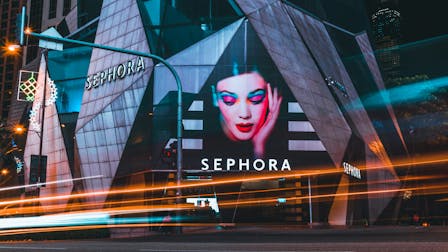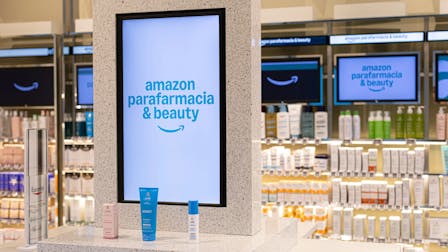Well Up: Sephora Rx, Amazon AI Aestheticians, and Patriotic Cosmetics
Will You Need a Prescription to Shop at Sephora?
Consumer interest in scientifically backed skincare is pushing the beauty industry even deeper into the realm of health — now reaching as far as pharma.
On February 26, Estée Lauder Cos. announced it had officially partnered with pharmaceutical company Serpin Pharma to begin exploring “powerful new biological pathways and cutting-edge biotech ingredients.” Meanwhile, L’Oréal has already seen results from this same focus, with the group reporting “5.1% growth in 2024 driven by dermatological skin-care.”
Now, the criteria for buying skincare is higher than ever: securing a spot on a drug store or specialty beauty shelf is only half of the equation. As skincare consumers are increasingly looking for proven benefits, scientific backing and medical expertise, it begs the question: Will the next generation of skincare products require a prescription?

Amazon Opens its ‘Parafarmacia & Beauty’ in Milan’s City Center
In February, Amazon debuted its first brick-and-mortar beauty and personal care store in Milan. Amazon Parafarmacia & Beauty is divided into two sections: a ‘Main Gallery,’ where shoppers can find a curated selection from brands like Eucerin, La Roche-Posay, Vichy, Avène, Bionike, Rilastil and CeraVe, and the ‘Derma-bar.’
Amazon describes the Derma-bar as, “an experiential area where customers can receive complimentary digital skin analysis.” After having their skin analysed, they’ll obtain a “comprehensive report on their skin type and condition” and be able to shop recommended products.
Over the course of 2025, the products showcased in the Parafarmacia & Beauty will become available to Amazon’s online marketplaces in Germany, France, Italy, Spain and the UK. The physical store is allowing Amazon to gain a foothold among European consumers, and to position the retailer as a bridge to the brands they already know and love. Their decision to leverage AI personalization also lends legitimacy to their in-store recommendations, while potentially teaching consumers to lean on conversations with Rufus down the line.

The Future of “Made In The USA” Beauty
NielsenIQ estimates that 7% of the beauty products currently sold in the United States are manufactured domestically. How will recently imposed tariffs impact this? In February 2025, Beauty Independent asked experts whether they anticipated this number to grow in response to evolving trade dynamics.
The majority of respondents agreed with NielsenIQ’s core prediction that US manufacturing in the beauty industry will only increase to 10 - 12% over the next three years, and that tariffs will push beauty prices up accordingly by 10 - 20%.
However, this conversation may force the larger market to reexamine how consumers see the words “Made in The USA.” Carson Kitzmiller, Principal Analyst in Beauty and Personal Care at Mintel, recently told Cosmetics Design that 80% of consumers want stricter safety regulations in beauty, adding “Nearly one in four beauty and personal care consumers find it difficult to trust new ingredients.”
This could mean that even if brands decide to onshore manufacturing, shoppers may be less inclined to trust their products. From there, additional clinical studies and reformulation will also only drive costs up. Nevertheless, a rise in nationalism could potentially counteract these obstacles, or at the very least, further complicate the issue.